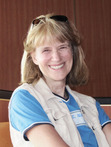The Play’s the Thing
I do not like to do the same thing twice. I’m far more likely to try a new recipe than reprise one I’ve made before. When a dish pleases my family or guests so much that it’s impossible not to repeat, it’s never as much fun to make the second or third time—still just as delicious (maybe even better) but the process has lost much of its charm.
In my writing life (which is far shorter than my cooking life), I seem to be equally resistant to formulas, repetitive structures, sequels or series. My first book MISS ALCOTT’S EMAIL (2006) is an odd amalgam of fact and fiction, research, philosophy and games. Also two recipes. The premise—modern day person communicating with long dead historical person—is not new with me, but it’s infrequently used. Several readers and people in the book business suggested I approach other historical characters with the same treatment. I said no—why do the same thing again? Sounds too much like work.
My second book DOT TO DOT (2011), although it too includes historical people, leans far more to the fiction end of the spectrum than does MISS ALCOTT’S E-MAIL. It also has a far more robust plot and I wrote it with the young teenager, not the adult, in mind.
My current public writing project is even more divergent. I’ve been writing a play! Fortunately, my hubris does not extend to believing that I can, in a reasonable amount of time, learn how to write a script that would produce an evening of gripping, pleasurable and educational entertainment. So I found Elizabeth Heffron www.cornish.edu/theater/faculty/elizabeth_heffron/ , an experienced and wonderfully simpatico co-author. She and I have been working together for almost two years now on our Weatherman Project (working title) script. Collaborative writing has been a joy. Most of an author’s writing time is solitary, zoned out, tethered only to one’s own brain. My time with Elizabeth has sparkled with jokes, shared insights and communal ah-ha moments as we create our joint world on paper.
Last week on Friday May 18, thanks to Elizabeth’s reputation and connections, we were able to present a staged reading of the Weatherman Project at the Seattle Repertory Theatre (www.seattlerep.org). Hearing one’s words spoken aloud by professionals is magical. Our short ten hours of rehearsal time was an incredibly enlightening process—I’ve learned so much about theatre and met so many wonderfully talented people. It’s like I’ve been welcomed into a new and delightful country.
Theatre is a spectator sport—the audience expects to see a time-limited story begin and end while they sit in a constrained physical space. Unlike book-reading, play-watching isn’t self-paced or private. This difference means that words and scenes need to be strung together differently in plays vs. books to allow for the differing circumstances of the watcher vs. the reader.
Pacing, I think, is more critical in plays than in books, to counter the watcher’s relative lack of freedom. In addition, playwrights must depend entirely on dialogue and visual action to express their characters’ humanity—all thinking must be externally visible; no long paragraphs of internal reflection allowed! In return for this apparent limitation, plays have a three-dimensional and collaborative immediacy that adds so much life back into the watcher’s experience.
Plays also live or die on the creative energy and skills of many more people than do books. Although editors, designers and cover artists can improve a reader’s experience of a book, those contributions are minor compared to what directors and actors bring to a play. That’s probably been the most eye-opening for me. I was absolutely enthralled at seeing what the director and the actors did to our words in last week’s staged reading. The value they added to our script was spectacular. Here’s the cast: Kaitlin Ziehr, Adam Standley, Andre Blackburn Nelson , Sara Mountjoy-Pepka and Jessica Martin. Kaytlin McIntyre read the stage directions and the whole thing was brilliantly directed by Sheila Daniels. Public kudos to them all.



